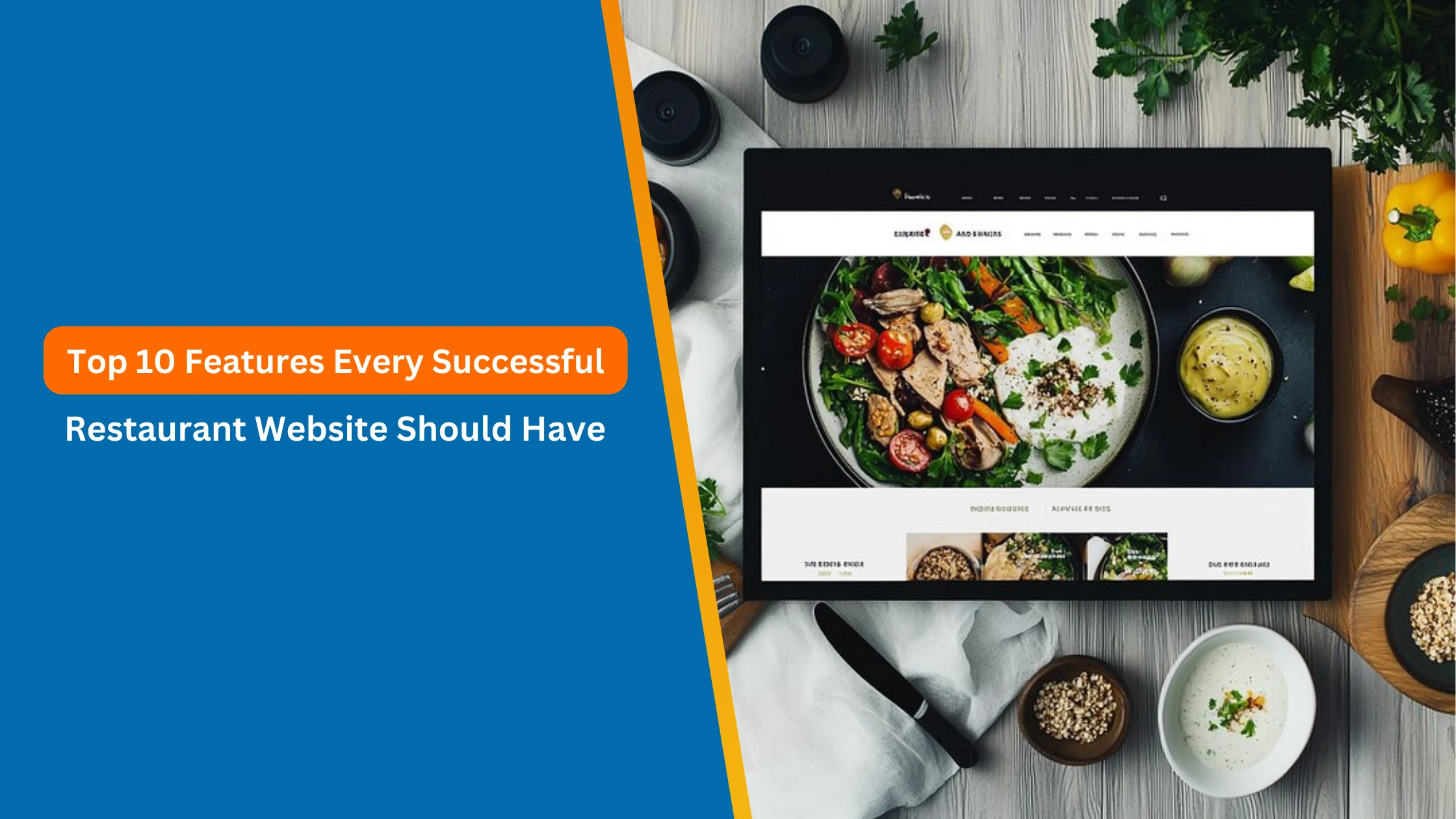In today’s digital age, a strong online presence is crucial for any restaurant’s success. More often than not, a website is the very first interaction a customer would have with the restaurant and therefore should be more than just a paper menu without the actual paper print. It should be a fast, easy, and beneficial platform that encourages users to click on the order button or book a table. As per a poll, 80% of diners today do some kind of online research work before heading to the eating joint; hence the need for good websites becomes clear. This blog outlines 10 critical elements that can help create successful restaurants and bring in potential customers.
- 80% of consumers research a restaurant online before dining. This emphasizes the critical role your website plays in attracting customers.
- Mobile optimization is essential. Over 60% of restaurant searches are performed on mobile devices.
- Online ordering is booming. The online food ordering market is projected to reach $320 billion by 2029.
Building a Delicious Online Experience:
Crafting a successful restaurant website goes beyond simply listing your menu and hours. It requires a strategic approach that caters to the needs and expectations of today’s tech-savvy diners.
1. High-Quality Photography:
Spice up your menu with tantalizing images of the dishes and even the ambiance. Always remember that the images sell the dishes and appetites as well.
Example: Cheesecake Factory’s website features stunning, close-up images of their menu items, making them look irresistible.

See How Our Experts Can Drive More Traffic to Your Website!
SEO: Boost your rankings and drive more organic traffic today!
Website Design/Development: Create a stunning website that converts visitors into customers.
Paid Media: Reach the right audience at the right time with expertly managed paid media.
2. Easy-to-Navigate Menu:
It is important to include an organized menu. Consider including sections for various dishes, specials, and filtering options (vegetarian, gluten-free, etc).
Example: The Olive Garden website presents its menu in a clean, categorized format, with clear descriptions and pricing.
3. Online Ordering System:
Provide an easy and simple online ordering system to facilitate takeout and delivery. This makes the ordering process simpler and meets the trend of increased online food ordering. Your ordering system should be mobile-responsive and accept leading payment methods.
Example: Domino’s Pizza’s website has a highly intuitive online ordering system, allowing customers to customize their orders and track delivery in real-time.
4. Location and Contact Information:
Enable customers to reach you with ease. Ensure your location, contact number, and operating times are placed where customers can view easily. Placing a map and directions is an added advantage.
Example: Starbucks’ website has a store locator that allows users to quickly find the nearest location, along with address, phone number, and hours.
5. Reservation System:
Permit guests to make reservations through the Internet with an easy-to-use reservation system. Such an approach eliminates the need to dial the phone to make a reservation and allows for 24-hour reservations. It is also significantly enhanced through real-time availability updates.
Example: OpenTable integrates seamlessly with many restaurant websites, providing real-time availability and booking confirmation.
6. Mobile-Responsive Design:
Ensure that the design of your site is suitable for use on phones. With the evolvement of responsive design, people no longer have to worry about their screen size as it will fit a wide range of users since most of them search for restaurants on their phones.
Example: The Sweetgreen website adapts flawlessly to different screen sizes, ensuring a consistent user experience on any device.
7. Compelling Storytelling:
Tell the customers why your restaurant is special and what makes it different from other restaurants. Pay attention to your chefs, your ingredients, and your love for cooking. Thanks to storytelling, it is possible to establish a tangible bond with the audience and increase loyalty towards the brand.
Example: The Chipotle website tells the story of their commitment to sustainable ingredients and ethical sourcing.
8. Social Media Integration:
Make your website and your social media accounts hyperlinked so that you are able to broaden your outreach. Social media should be promoted and the best deals and new news should be presented.
Example: Many restaurants include social media feeds on their websites, displaying their latest Instagram posts and tweets.
9. SEO Optimization:
Invest in SEO for restaurants to ensure your website ranks high in search results. Use relevant keywords, optimize your content, and build high-quality backlinks. A strong SEO strategy drives organic traffic to your site, increasing visibility and attracting more customers. Consider partnering with a restaurant website design company experienced in SEO best practices.
Example: A restaurant specializing in sushi in Los Angeles might optimize their website with keywords like “best sushi Los Angeles,” “sushi restaurants near me,” and “Japanese cuisine.” Partnering with a restaurant website design company can be crucial for effective SEO implementation.
10. Customer Testimonials and Reviews:
Concerning some customer feedback and testimonials, there is great credibility from the majority of them. Readers are always encouraged to give their comments and opinions and how they feel after dining out.
Example: Yelp integration allows restaurants to display their Yelp rating and reviews directly on their website.
Choosing the Right Platform:
When developing your restaurant website, consider the benefits of custom WordPress development services. WordPress offers flexibility, scalability, and a wide range of plugins to enhance functionality. A food website design built on WordPress can be customized to reflect your brand identity and meet your specific needs.
Need a Delicious Online Presence?
Icecube Digital is a leading restaurant website design company specializing in crafting stunning, functional, and SEO-optimized websites for restaurants. We also offer food website design services and custom WordPress development services. Contact us today!






